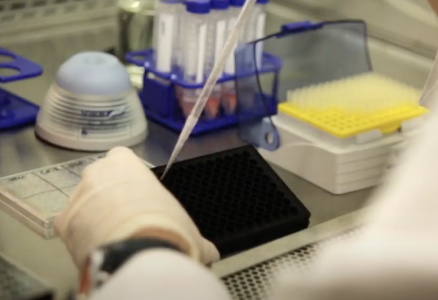This man's terminal diagnosis was reversed by "sci-fi" cancer treatment—see how he beat the odds
By
Veronica E.
- Replies 0
In modern medicine, some of the most extraordinary breakthroughs can seem like something straight out of a science fiction novel.
For renowned jazz musician Michael Wolff, what once felt like a last hope became a real-world miracle.
After facing a terminal cancer diagnosis, Wolff’s journey took a remarkable turn thanks to an innovative treatment that would ultimately save his life.
His story is a powerful reminder of how rapidly modern medicine continues to evolve—and how hope can sometimes be found in the most unexpected places.

Wolff’s journey started with a diagnosis of follicular lymphoma, a typically slow-growing blood cancer.
After 18 months of intensive treatment with little progress, his oncologist referred him for a second opinion at Memorial Sloan Kettering Cancer Center.
There, Dr. Mrinal Gounder uncovered a surprising twist: Wolff wasn’t battling lymphoma after all—he had histiocytic sarcoma, a rare and aggressive cancer with only about 300 new cases diagnosed annually in the United States.
The outlook was grim. Dr. Gounder, with limited treatment experience for this rare disease, warned Wolff he likely had just two months to live.
Fast forward ten years, and Michael Wolff’s story has defied all expectations.
Thanks to a breakthrough in genetic technology, he is not just surviving—he’s thriving, performing around the world, and serving as a living example of what cutting-edge medicine can achieve.
What turned the tide for Wolff was genetic sequencing—a process that analyzes the DNA of cancer cells to identify specific mutations.
Dr. Shridar Ganesan, director of NYU Langone’s molecular oncology program, explains that understanding these mutations is critical for developing personalized, targeted treatments.
While Wolff underwent another round of chemotherapy, doctors waited for the genetic sequencing results to guide a better plan.
When the results came in, they revealed several possible treatment options based on the unique makeup of his cancer.
Source: YouTube / The Wall Street Journal.
Among the available options, one drug stood out—Mekinist, a medication typically used to treat melanoma.
Although Mekinist had never been used for histiocytic sarcoma before, Wolff's genetic profile suggested it might work.
The decision to try it was a leap of faith—and it paid off.
Shortly after starting Mekinist, Wolff’s chemotherapy side effects disappeared.
A PET scan just ten days later showed an 80% reduction in his tumors, an outcome that doctors called remarkable.
Wolff’s success opened doors for future treatments.
In 2018, his case was published in the New England Journal of Medicine, and by 2022, a second drug, Cotellic, also received FDA approval for treating histiocytic sarcomas.

Michael Wolff’s case became one of the early examples of the power of genetic sequencing in cancer treatment.
Today, the technology has advanced so much that analyzing a tumor’s whole genome can take just a few days.
This approach is transforming cancer treatment, offering patients highly specific therapies rather than one-size-fits-all options.
Dr. Ganesan notes that understanding the enormous diversity of cancers is essential to improving outcomes—and personalized treatments based on genetic profiles are leading the way forward.
Wolff’s story is a testament to what can happen when technology, expertise, and perseverance come together.
It shows that even in the face of a dire prognosis, new discoveries can offer life-changing hope.
Read next: 22 silent cancer signals you might be ignoring–Could you be at risk? Find out now!

Michael Wolff’s inspiring journey is a reminder of how far cancer treatment has come—and how much promise the future holds. Have you or someone you love experienced the impact of personalized medicine? What are your hopes for the future of cancer research? Share your thoughts and stories in the comments!
For renowned jazz musician Michael Wolff, what once felt like a last hope became a real-world miracle.
After facing a terminal cancer diagnosis, Wolff’s journey took a remarkable turn thanks to an innovative treatment that would ultimately save his life.
His story is a powerful reminder of how rapidly modern medicine continues to evolve—and how hope can sometimes be found in the most unexpected places.

Advances in medical research played a key role in Michael Wolff’s remarkable recovery. Image Source: YouTube / The Wall Street Journal.
The unexpected turn in Michael Wolff’s battle with cancer
Wolff’s journey started with a diagnosis of follicular lymphoma, a typically slow-growing blood cancer.
After 18 months of intensive treatment with little progress, his oncologist referred him for a second opinion at Memorial Sloan Kettering Cancer Center.
There, Dr. Mrinal Gounder uncovered a surprising twist: Wolff wasn’t battling lymphoma after all—he had histiocytic sarcoma, a rare and aggressive cancer with only about 300 new cases diagnosed annually in the United States.
The outlook was grim. Dr. Gounder, with limited treatment experience for this rare disease, warned Wolff he likely had just two months to live.
The game changer: Genetic sequencing
Fast forward ten years, and Michael Wolff’s story has defied all expectations.
Thanks to a breakthrough in genetic technology, he is not just surviving—he’s thriving, performing around the world, and serving as a living example of what cutting-edge medicine can achieve.
What turned the tide for Wolff was genetic sequencing—a process that analyzes the DNA of cancer cells to identify specific mutations.
Also read: Could this common prescription drug offer unexpected cancer protection?
Dr. Shridar Ganesan, director of NYU Langone’s molecular oncology program, explains that understanding these mutations is critical for developing personalized, targeted treatments.
While Wolff underwent another round of chemotherapy, doctors waited for the genetic sequencing results to guide a better plan.
When the results came in, they revealed several possible treatment options based on the unique makeup of his cancer.
Source: YouTube / The Wall Street Journal.
Also read: Game-changing cancer breakthrough—is this the cure we've been waiting for?
Choosing Mekinist: A new path forward
Among the available options, one drug stood out—Mekinist, a medication typically used to treat melanoma.
Although Mekinist had never been used for histiocytic sarcoma before, Wolff's genetic profile suggested it might work.
The decision to try it was a leap of faith—and it paid off.
Shortly after starting Mekinist, Wolff’s chemotherapy side effects disappeared.
A PET scan just ten days later showed an 80% reduction in his tumors, an outcome that doctors called remarkable.
Wolff’s success opened doors for future treatments.
In 2018, his case was published in the New England Journal of Medicine, and by 2022, a second drug, Cotellic, also received FDA approval for treating histiocytic sarcomas.

Michael Wolff continues to share his passion for music after overcoming a life-threatening illness. Image Source: YouTube / @wishreyshorts.
Also read: This drink linked to cancer—experts urge caution!
The future of cancer care: Personalized medicine
Michael Wolff’s case became one of the early examples of the power of genetic sequencing in cancer treatment.
Today, the technology has advanced so much that analyzing a tumor’s whole genome can take just a few days.
This approach is transforming cancer treatment, offering patients highly specific therapies rather than one-size-fits-all options.
Dr. Ganesan notes that understanding the enormous diversity of cancers is essential to improving outcomes—and personalized treatments based on genetic profiles are leading the way forward.
Wolff’s story is a testament to what can happen when technology, expertise, and perseverance come together.
It shows that even in the face of a dire prognosis, new discoveries can offer life-changing hope.
Read next: 22 silent cancer signals you might be ignoring–Could you be at risk? Find out now!
Key Takeaways
- Michael Wolff was diagnosed with a very rare and aggressive blood cancer called histiocytic sarcoma after initially being treated for a different form of cancer.
- Wolff’s life was saved through the use of genetic sequencing, which identified an effective treatment for his rare cancer using a drug typically prescribed for melanomas.
- His case led to a new treatment approach for histiocytic sarcomas, with drugs like Mekinist and later Cotellic receiving FDA approval for treating this cancer type.
- Advances in genetic sequencing now allow scientists to analyze a tumor’s whole genome quickly, providing personalized treatment options and improving outcomes for patients with advanced-stage cancers.
Michael Wolff’s inspiring journey is a reminder of how far cancer treatment has come—and how much promise the future holds. Have you or someone you love experienced the impact of personalized medicine? What are your hopes for the future of cancer research? Share your thoughts and stories in the comments!






